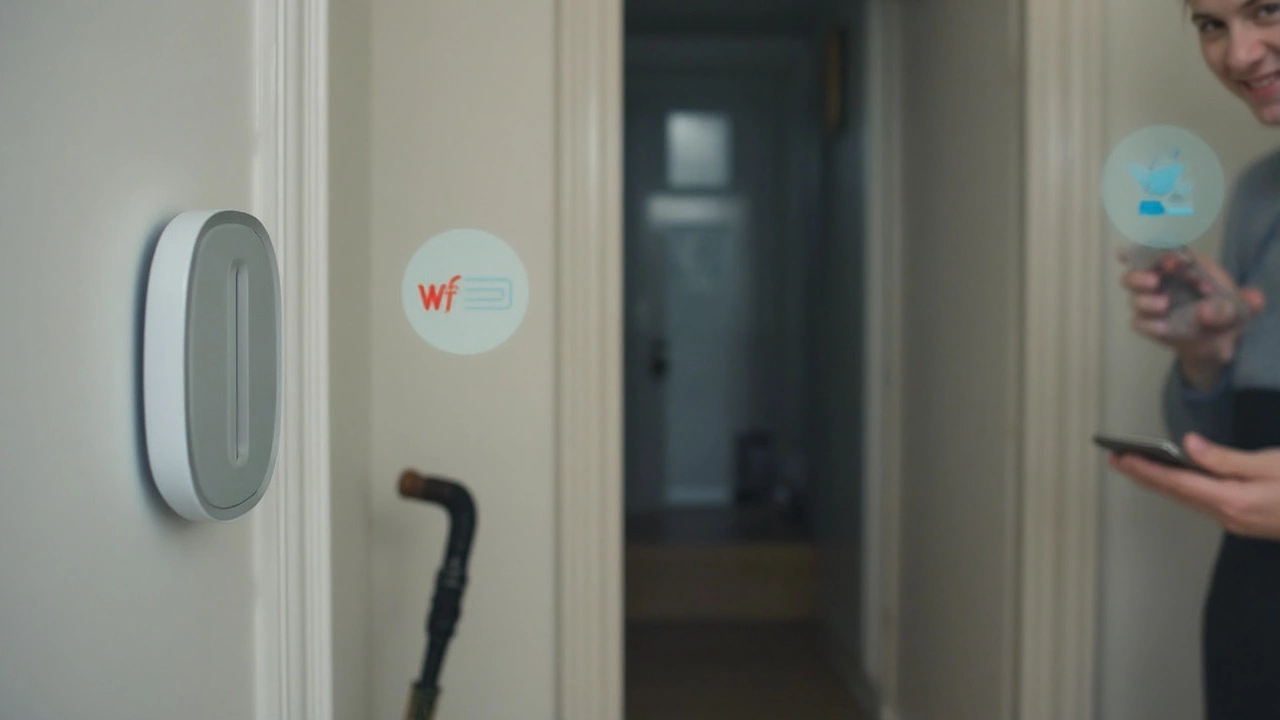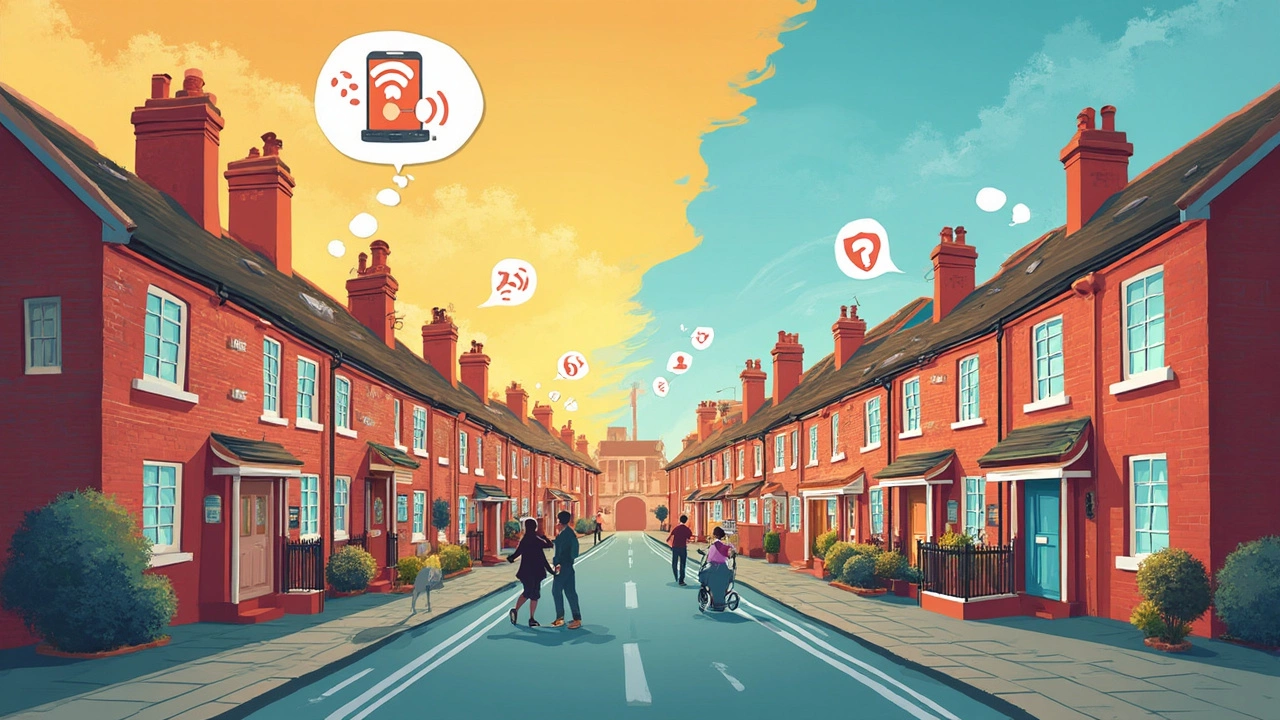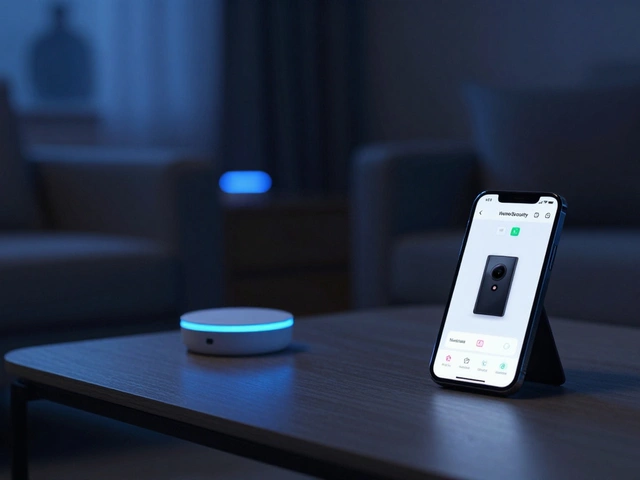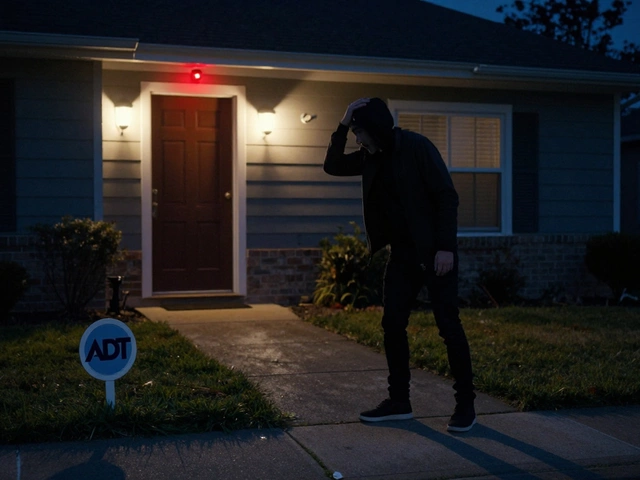Here’s something a lot of folks get wrong: just because it’s called a wireless alarm system doesn’t mean it always needs WiFi. Sounds weird, right? Let’s cut through the confusion. Most wireless alarm systems use radio signals or cellular networks to connect their sensors and control panel. The "wireless" part means no tangled mess of wires running through your walls—awesome for renters or anyone adding security after moving in.
WiFi only steps in for certain features, like sending you app notifications or hooking your alarm up to smart home gadgets. If your WiFi crashes, your doors and windows will still trigger the siren if something’s up. But without WiFi, you might not get an alert on your phone. That’s the trade-off. So if you spend a lot of time away, or you want to peek at your cameras from work, you’ll want a system that uses WiFi or has cellular backup. Suddenly, that neighbor who’s always borrowing your WiFi seems a little less annoying, huh?
- How Wireless Alarm Systems Actually Work
- What Happens Without WiFi
- Why WiFi Can Be a Game-Changer
- Types of Wireless Alarm Connections
- Picking the Right System for Your House
How Wireless Alarm Systems Actually Work
If you’re picturing some high-tech, complicated wizardry, relax. The main thing about a wireless alarm system is right in the name—no wires are needed between the sensors, control panel, or the siren. Everything talks to each other using radio waves or sometimes cellular signals, kind of like how walkie-talkies work but way smarter and quieter.
Here’s the basic setup most people end up with:
- Entry sensors for doors and windows
- Motion sensors (usually for rooms or hallways)
- A main control panel (often with a keypad or touchscreen)
- A loud siren for when stuff goes wrong
When you set the system, all those components keep an eye out for trouble. Open a protected window at 3am? The window sensor tells the control panel, which triggers the alarm in less than a second. All that happens through signals sent wirelessly around your home.
Some of these systems use battery power. That means you don’t have to hunt for a plug behind every piece of furniture, and if the power goes out, your alarm still works. The sensors are mounted with sticky pads or screws, so it won’t take you all weekend to set up everything.
The really clever part is how the control panel handles alerts. With WiFi or a SIM card (like your phone uses), it can talk to the outside world. It’ll ping your smartphone, send a text, or even call a security company if you set it up that way. If you skip WiFi, you still get the siren blaring, but mobile alerts and app controls might not work. So there’s a difference in the experience depending on your setup.
What Happens Without WiFi
Curious what your wifi free wireless alarm system is really capable of? Here’s the nitty-gritty: most basic wireless alarm systems keep working just fine even when there’s no WiFi connected. The sensors talk to the control panel over their own radio frequencies. When someone opens a door or window, the alarm still sounds and your siren will make as much noise as ever—no internet needed for that core function.
The catch? If your system relies on WiFi to send mobile alerts or connect to an app, you’ll be left in the dark the minute your internet drops. So, if you’re counting on your phone buzzing when your front door is forced open, tough luck if your WiFi is spotty or shuts down. This also goes for most smart home routines (like those that link your alarm with smart lights or locks)—they won’t trigger unless there’s an active internet connection.
Lots of wireless alarm systems get around this by using a backup cellular connection. These ones keep sending out alerts even when your WiFi is out, as long as there’s cell service in your area. Here’s a quick breakdown of what works and what doesn’t when WiFi is down:
- Still works: Alarm siren, basic sensor triggers, keypad entry/exit.
- Won't work: Mobile notifications, remote arming/disarming through app, live video from security cameras.
According to a report by the Consumer Technology Association in 2024, about 35% of U.S. households rely on alarm systems with both WiFi and cellular backup, while 19% use WiFi-only systems. That means lots of people risk losing remote features if their WiFi kicks out.
| Feature | Works Without WiFi? |
|---|---|
| Siren sounds | Yes |
| Mobile alerts | No |
| App controls | No |
| Sensor triggers | Yes |
| Smart device integration | No |
| Cellular backup notifications | If available |
If your home WiFi is flaky or your ISP goes down sometimes, think about systems with built-in SIMs. That way you’re not totally cut off from your alarm when it matters most.

Why WiFi Can Be a Game-Changer
Here’s where things get interesting. If your wifi is steady, your wireless alarm system can do a lot more than just blare loudly when a door pops open. WiFi-friendly alarms send instant notifications to your phone, smartwatch, or even your email. So, if you’re hiking, at work, or halfway across the country visiting family, you’ll know right away if something’s fishy at home.
Plus, WiFi bridges your alarm system with other smart devices. You can link your system with smart lights, smart locks, or even that video doorbell everyone keeps talking about. Forget complicated setups; most modern alarms let you tweak settings, check the status, or disarm the whole thing with just a tap on your phone. Real convenience for busy days—or if you’re just feeling a bit lazy on a Sunday morning.
Here’s a quick list of what WiFi adds to your system:
- Remote control using mobile apps
- Push alerts when alarms go off
- Easy integration with cameras and other smart gadgets
- Real-time system updates and log access
Want hard proof? Consumer Reports says,
"WiFi connectivity makes a security system far more interactive, letting the homeowner get alerts, make changes, and even view camera footage from anywhere."
Keep in mind: WiFi isn’t perfect. If your internet is spotty or there’s a power outage and your router goes down, those nice-to-have features won’t work until you’re back online. That’s why some folks go for systems with both WiFi and cellular backup, for double the peace of mind.
Types of Wireless Alarm Connections
There’s no one-size-fits-all way these systems talk to each other. The guts of your wireless alarm can connect in a few different ways, and picking the right one makes a big difference in how your home stays safe. Here’s what you’ll find out there:
- WiFi: This is popular for folks who love smart homes. Sensors and the main hub connect through your home WiFi network. You get mobile alerts, can check cameras on your phone, and control stuff from away. But if your internet goes down, some features might take a break. On the plus side, it’s easy to set up if your WiFi is solid.
- Cellular: More reliable for 24/7 security. These use a built-in SIM card, just like your phone, to send alerts and stay connected with your security provider. If thieves cut your internet or power, it keeps working as long as you’ve got cell coverage.
- RF (Radio Frequency): Most wireless sensors (think door or window contacts) use RF signals to talk to the hub. This connection doesn’t care if WiFi or cell service is out—it’s local and quick. The only limit is range; if your house is huge, you might need a signal repeater.
- Zigbee/Z-Wave: Nerdy names, but handy if you’re into smart home gadgets. These are low-power ways for devices to talk wirelessly. They can work alongside WiFi or even form their own mesh network, which is cool if you want to add smart locks or lightbulbs later.
Here’s how the most common connection types stack up:
| Connection Type | Needs Internet? | Best For | Main Weakness |
|---|---|---|---|
| WiFi | Yes (for smart features) | Remote monitoring, smart homes | Needs stable internet |
| Cellular | No | Backups, no landline needed | Monthly fee for SIM |
| RF | No | Core arming/disarming, local alerts | Limited range in big homes |
| Zigbee/Z-Wave | No (but can use with smart hubs) | Multi-device smart homes | Needs compatible hub |
The bottom line: You don’t absolutely need WiFi, but it can unlock more features if you do use it. A good number of alarm systems mix these together, so you get double coverage if one goes down. It’s all about how you want your home to work—and how much backup you want if your internet glitches or your cell signal drops for a few minutes.

Picking the Right System for Your House
So you want a wireless alarm system, but you’re not sure what features you’ll really use—or if you even need that pesky WiFi. Here’s the trick: start with your needs and lifestyle. If the main thing you care about is keeping your doors and windows protected with those loud alarms, plenty of basic models run on batteries and use radio signals only. You can set them up without any internet in sight, and they’ll still wake the neighbors if someone tries to break in.
If smartphones are glued to your hand or you travel a lot, spring for a system that can send alerts to your phone. These usually connect to your WiFi, though some offer a separate cellular backup (but check—cell backup often comes with a monthly fee). Some brands, like SimpliSafe or Ring, let you monitor everything from an app, see video clips, and even connect the alarm to smart devices—all of that needs a strong internet connection.
- Check your internet reliability. Spotty WiFi? Prioritize systems with backup options or stand-alone solutions.
- Look for easy setup. If you rent or might move soon, stick with peel-and-stick sensors that don’t damage walls.
- If you want video cameras, make sure your plan supports video storage—either through the cloud (which eats data) or a local SD card.
- If you forget to arm the system (like I do sometimes), features like remote arming through your phone will save you. That needs WiFi or cellular too.
Don’t just go for bells and whistles you’ll never use. Think about who’s living in the house—kids, pets, roommates? Some systems let you set up different codes for each person. That makes tracking and managing access super simple. The keyword here is wireless alarm system, but don't get dazzled by tech you don't actually need. Real security is about the right fit, not just the right hype.






